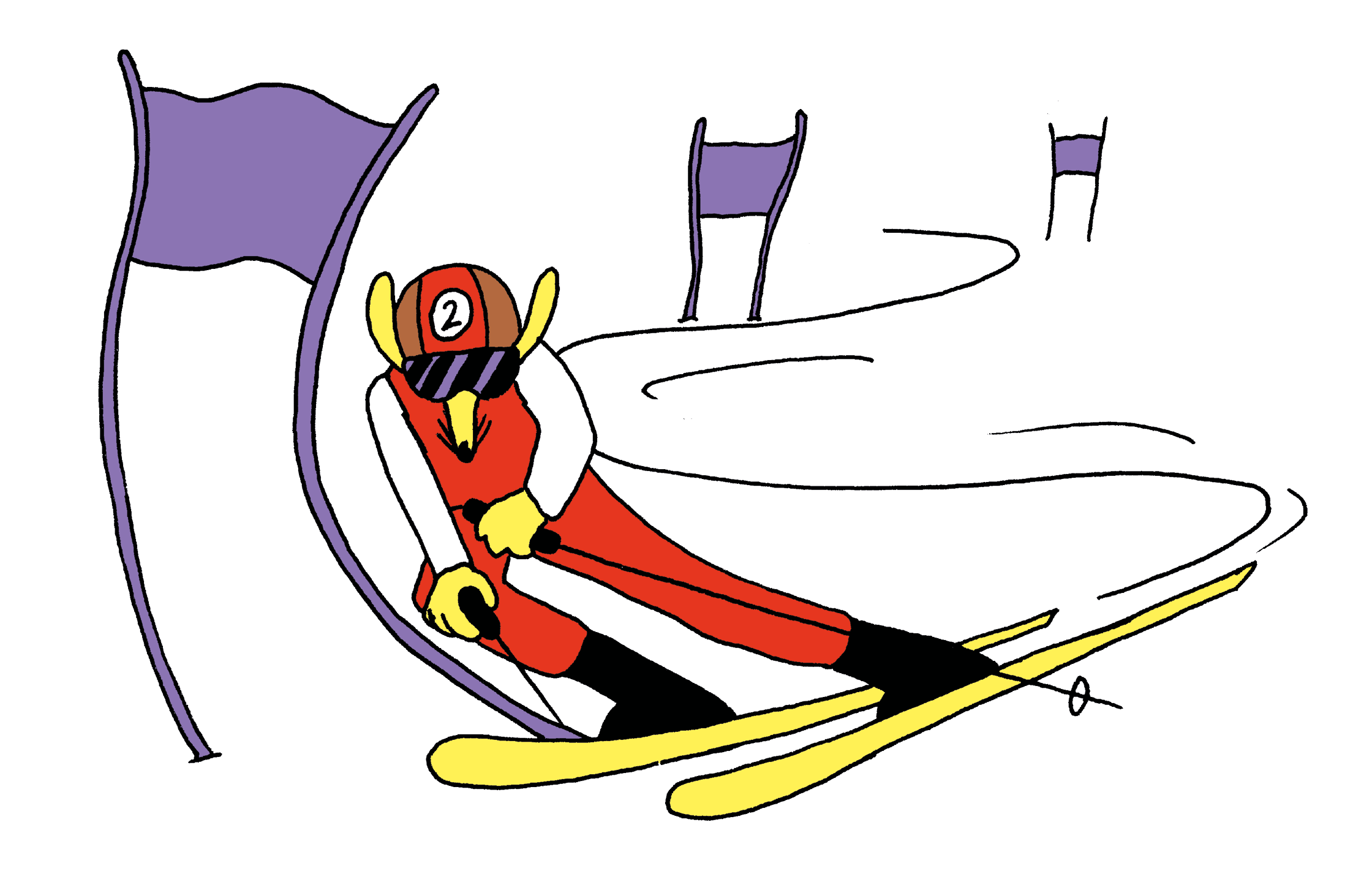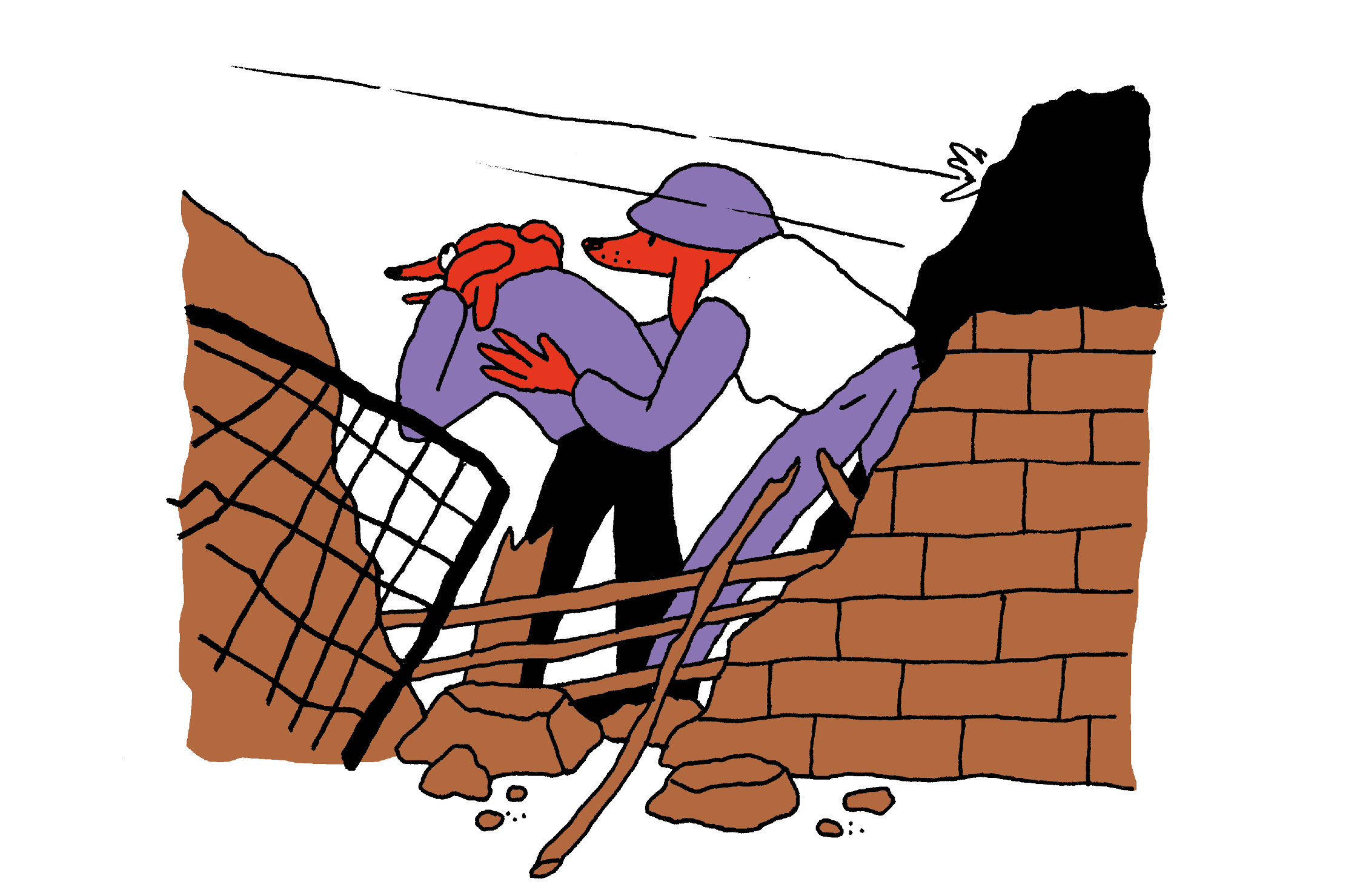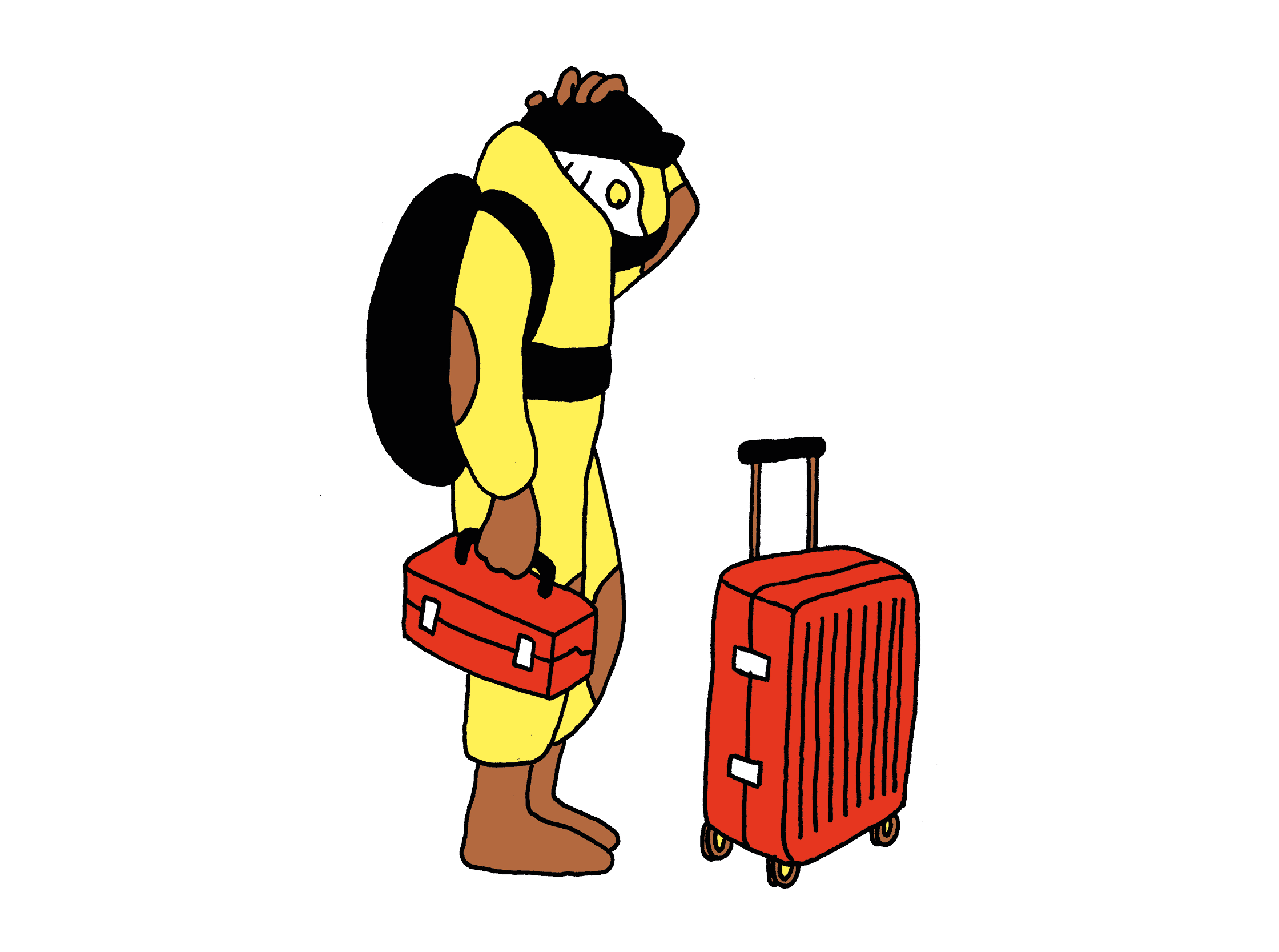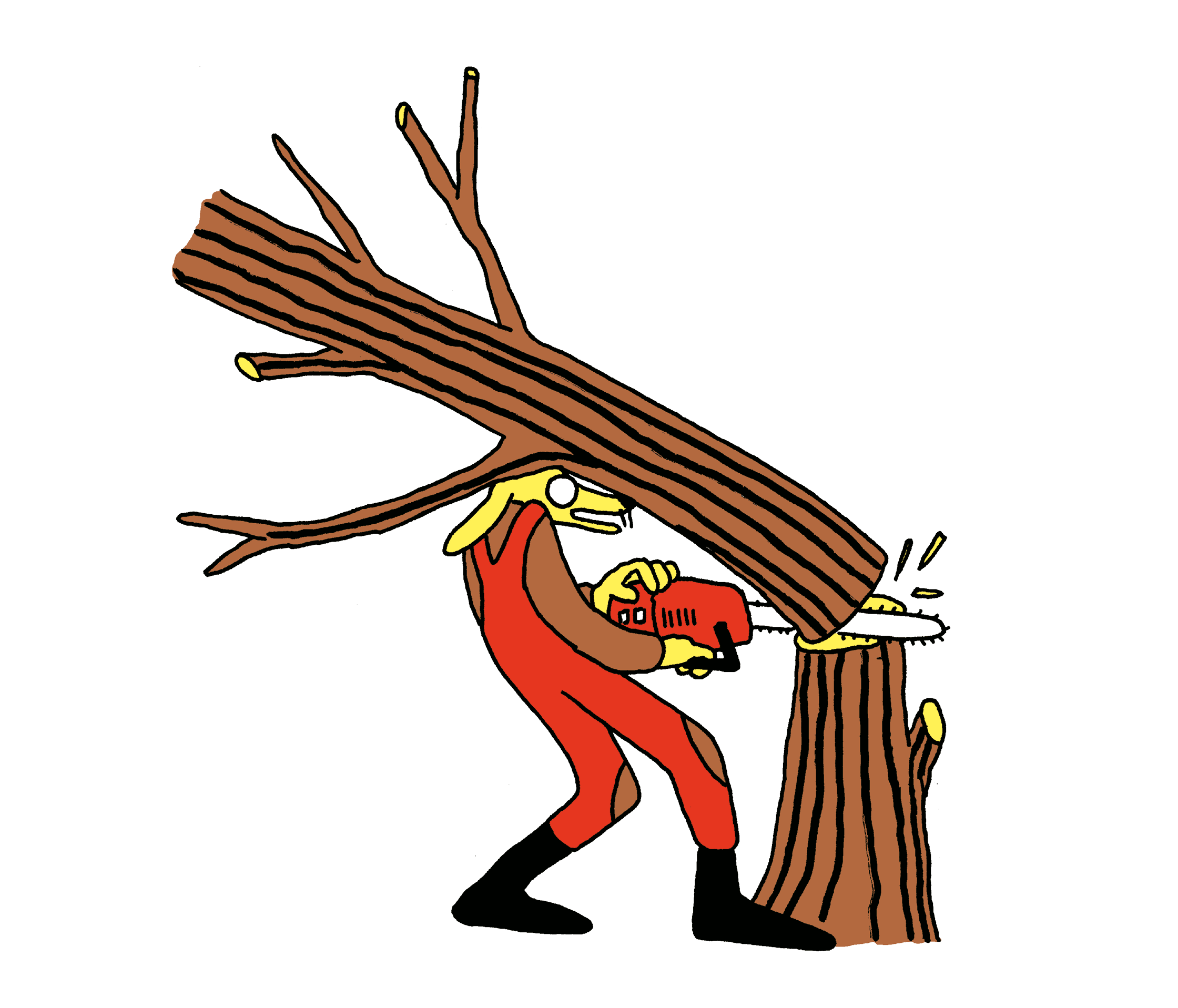Living the risk
Five portraits of people with particularly high-risk professions.
Marco Büchel and Michelle Mackintosh: Sebastian Sele
Rhea Oderbolz: Michèle Roten
Corporal Damien and Albert Lamorisse: Nicola Brusa
Marco “Büxi” Büchel, former ski racer
“The subconscious urges you to flee”
Racing down icy slopes at 140 kilometres an hour: how do you survive that?

It is said that the Kitzbühel ski race produces as many patients as it does legends. For many years, 54-year-old professional skier Marco Büchel participated in this legendary race, getting into position in the little hut marking the start of the Streif ski course.
He was convinced: “I will win the Kitzbühel race. And achieve immortality as a result of this accomplishment.” But immortality usually comes at a price: you could go down in history or you could endanger life and limb.
“The subconscious screams at you and urges you to flee,” the Liechtenstein native recalls today of the moment in the start hut, staring down into the icy abyss he was about to speed down at up to 140 kilometres per hour. “The conscious responds: I’ve spent tens of thousands of hours on skis, I have inspected the course, I know what I’m doing.” At this moment, the head must take the wheel – and the gut feeling is relegated to the passenger seat.
He was repeatedly asked what he had been thinking during such a descent. “Nothing at all,” he then replied. “You are in the flow and trust your intuition completely.” Once his skis hit the slope, he felt an inner calm come over him. The next ten metres became the centre of his universe. There was only him, the snow and the ski slope.
The risks Büchel took were selective and calculated. “When I was not living in these moments, I was rather risk-averse,” he says as someone who not only risked his life professionally back then but, in his free time, was also known to strap a parachute on his back and jump out of planes or off cliffs.
When skiing, he trusted his experience and his team. For skydiving and base jumping, he relied on his checklist: are the weather conditions good, is this the right equipment and do I have the skills? It is important to know your limits – and to say no when push comes to shove. “The factor of chance cannot be completely eliminated in this way,” he says, “but at least it can be limited.”
When he took the greatest chance of all, the odds were strongly against him. “Only 0.01 per cent of all those who try to become legendary professional skiers succeed,” says Büchel. The remaining 99.9 per cent would start their thirties with a ten-year gap in their CV. “Nobody is out there waiting for you.” Despite his penchant for calculated risk, Büchel also had his share of luck. And in January 2008, he even achieved immortality: gold medal in the Super-G race in Kitzbühel.
These days, skiing is just a hobby. When he retired from racing, he also gave up extreme sports: in base jumping, the odds became overwhelming – friends died. He got bored of skydiving. Today, he finds challenges in marathon running and says he no longer even looks for a kick: “In other words: I have simply gotten old.”
Michelle Mackintosh, Security Consultant
“Just another war”
Gaza, Iraq, Afghanistan: Michelle Mackintosh advises governments, NGOs and media professionals in extreme situations.

As soon as bombs start falling somewhere, Michelle Mackintosh knows where she will travel to next. Since the war in Yugoslavia, the Scot has been travelling to conflict zones around the world. “To the major conflicts,” she specifies: Gaza, Iraq, Afghanistan. But her list includes many other places: Kenya, Somalia, Uganda. The 61-year-old went on 63 missions as officer for security and crisis healthcare. On behalf of Heimdal Security Ltd, she advises governments, NGOs and media professionals on site on how to avoid being kidnapped, targeted by snipers or injured by bombs when working on the front line.
The most important question she is asked around the world is: is the situation worth exposing myself to risk? Can I justify risking bombs, land mines and kidnappings to save the lives of others?
“Of course, danger comes with thrills,” says Mackintosh. It is exciting to find yourself in situations that most people would avoid at all cost. “I’m absolutely in my element when bullets are whizzing around or bombs are falling.”
Her family had warned her during her first mission to Ukraine: this would be her death sentence. But reality on the ground was more nuanced. Mackintosh knew that the war was not raging in Kiev, where she would live, but on the eastern border. She knew that even when missiles were raining down on Kiev, the likelihood of being hit was small. And should missiles hit the house, she knew that the bathroom was the safest place.
“All of this is normal for me by now,” says Mackintosh. “It is just another war.”
An incident in Gaza illustrated how the boundary has shifted. “We asked our local team what the greatest danger was for them,” she recalls. The Palestinians discussed the question and agreed on a response. It was not the bombs and rockets that fell every day. “They said the biggest danger was sunburn.”
When Mackintosh returns to Scotland, the war stays with her. She cannot stand the noise of children shouting. Supermarkets even less. She talks about panic attacks and the fact that she has been receiving professional help since 2007. When does the risk become too large? “I haven’t drawn a clear red line,” she replies. “But I’m getting older and will have to stop before I become a burden to others in the field.”
Until then, her son, who is fascinated by his mother’s tales of different cultures and languages, knows: when bombs start falling somewhere, his mother will be boarding a plane soon. “It is my job, after all,” she says. And who would do it if not her?
Corporal Damien, bomb disposal expert
“Suspicious parcels everywhere”
Making just one little mistake comes with potentially fatal consequences: how do you keep calm when defusing bombs?

Anyone can summon up a picture of his profession. The seconds are counting down in a bright red digital display, coloured wires are protruding, and the question oscillating in Damien’s head is: blue or red, blue or red – or maybe green after all? Corporal Damien knows the image of the ticking time bomb, knows the feeling of adrenaline shooting through his body – but imagery and emotions are rarely allowed to join forces in his everyday life.
Damien, 37, has been working as a bomb disposal expert for the Geneva cantonal police for ten years. Geneva has an airport, Geneva has the UN and Geneva has the watch manufacturer Patek Philippe. They keep Damien and his colleagues on their toes. The 2024 affair surrounding the watch manufacturer was the most spectacular case in his career: three bombs, two detonations, an injured girl and ransom demands totalling millions.
When he talks about his everyday life, one thing quickly becomes clear: his profession goes beyond choosing between blue, red or green, it has more facets than there are colours for cables. And the police officer deals with more tasks than “just” cutting the right wire: dud fireworks following national holiday celebrations on 1st August, abandoned suitcases, suspicious parcels and carelessly discarded chemicals. When he is called in, he sets off in his panel van. There are always three to a team and nobody does anything without the three of them having agreed on it beforehand: every intervention is a lesson in risk management. The greatest risk: thinking that nothing will happen this time, either.
“Let’s take the suitcase at the airport,” says Damien. He has already cordoned off an area a hundred times, made sure a hundred times that nobody is in the danger zone, had the robot work its way to the object via remote control a hundred times and x-ray it, only to find bikinis, pants and travel laundry detergents a hundred times. And yet he has to assume that the suitcase will blow up in his face if he makes a mistake, even if he has done it all a hundred times. This also means that unless there is a time fuse, Damien and his colleagues will not allow themselves to be put under pressure. They work the way Damien talks on the phone, languidly, prudently – or not at all. They follow strictly regulated procedures and try to “keep their chakra open”, as Damien puts it. While always bearing these procedures in mind, the main thing is to continue to work in the moment to avoid potentially overlooking a detail. That is when the adrenaline comes into play; it helps to stay fully focused.
Every intervention has its protocols, and Damien and his colleagues have gone through every protocol multiple times during their training, and adapted and refined it time and again. His profession cannot afford to come to a standstill; it is important to keep up with the times. To this end, experts come together from all around the world to exchange ideas, learn from the experiences of others and ensure that they are not left behind by the “other side”. “It is all extremely exciting and interesting”, he says.
Risk, adds Damien, is part of his job. He tries to keep it to a minimum – and to exclude it from his private life as much as possible. The déformation professionelle of a bomb disposal expert? Looking at everything with a Hollywood mindset and “seeing suspicious packages everywhere. Even when browsing the shelves of a hardware store, I’m checking whether anything could be assembled into something explosive”. And yes, he is one of those who can only sit down at a restaurant table if he can keep an eye on the entrance.
Rhea Oderbolz, forest warden
“Every situation is unique”
Dangers lurk everywhere when felling wood. Rhea Oderbolz has to rely on intuition and judgement.

It takes her around an hour to fell a tree. That is a typical agenda item for this time of the year: winter is tree-felling season. On the one hand, because the trees are in their dormant phase, and on the other to minimise risk: when the tree is barren, it is easier to assess the crown, for example, to identify whether any dead branches could pose a danger. This is the first step: assessing the situation. How is the tree positioned, is it leaning to one side, what is the surrounding terrain like, are there buildings or paths that need to be closed off?
Rhea Oderbolz is a forest warden in her third year of training. She realised that she wanted to do this job when she spent a day with a forest warden at secondary school: “He knew so much about the forest and could read so much from the trees, I found that fascinating.” Her mother also found her career choice exciting – or maybe too exciting: she was not enthusiastic. She has changed her mind since. A forest warden has one of the most dangerous professions in the world. The risks lurk everywhere: from falling down in the terrain themselves to being hit by falling objects or runaway tree trunks. Wardens use chainsaws, risk injuring themselves on caterpillars and cable winches, apply toxic substances and are sometimes exposed to weather conditions that make their work even more difficult.
“Of course we have a lot of guidelines, protocols and protective clothing,” says Rhea Oderbolz. Training is good and the support is close. However, every situation is unique, “every tree and every terrain is different and therefore impossible to generalise.” For example: “In general, the following rule applies: work from where the tree doesn’t hang over you. But when you are working with a cable winch and diverting the cable with a pulley, the cable is at an angle – and if something goes wrong, in this case, you shouldn’t be where the cable comes flying down. But if neither direction is ideal, then it is more about weighing up which side poses less risk,” explains the 21-year-old.
In a small industry like forestry work, word spreads after every accident, be it an injury while sharpening the chainsaw or an apprentice who has fallen to his or her death. “I’m very much aware of the fact that something can happen at any time,” says Rhea Oderbolz. You really have to show absolute presence of mind at all times. “Unfortunately, I tend to go to work even when I’m not really fit. I really shouldn’t be doing that.” Generally, she is a reserved person given to thinking things through, “it took me a long time to feel really confident”. So far, she has only suffered minor injuries and cuts, and once she burnt herself on the chainsaw exhaust, which happens to almost everyone.
Once the situation has been assessed, the surrounding area secured, the felling notch calculated and marked, the colleagues warned by radio communication, Rhea Oderbolz makes the felling cut – and a giant topples. With every tree felled, she gets better at it, and the risk gets a little smaller. But it will never be zero: “Even the most experienced forest wardens occasionally come across a tree where felling it turns out completely differently than planned.” Rhea Oderbolz can live with that.
Albert Lamorisse, director and game inventor
Momentous risk
“Risk” is one of the most popular board games. Its inventor’s daring was his undoing.

We know little about Albert Lamorisse’s general approach to risk. Just this much: he took one too many risks – and crashed with his helicopter. And yet the French director became world-famous because of “Risk”: in the 1950s, he invented one of the most successful board games ever.
Albert Lamorisse was born in Paris in 1922. He was a daydreamer, a schoolboy who was hardly interested in anything – until he discovered film and chess. The world probably also owes “Risk” to his penchant for strategy and game ideas. During family holidays in the French Alps, Lamorisse drew a world map on a sheet of paper, made game pieces and wrote down the rules. The game was designed to keep his three children and friends occupied on long winter evenings. In essence, it was about taking risks to gain strategic advantages and conquer the territories of other players.
“World Conquest” – the game’s original, martial version – later became “Risk”. The new name sounded more harmless and better suited Lamorisse’s pacifist nature, and he applied for a patent for the game in 1957. “Risk” became a global success and inspired others to develop new strategic games – from “Diplomacy” to “Catan”
Lamorisse was also a visionary filmmaker. His poetic short films won international awards, including the Palme d’Or in Cannes and the Oscar for Best Original Screenplay in 1957. For “The Red Balloon” – supposedly only approved in its 42nd screenplay version – he invented a tender parable about friendship and freedom. A young boy, played by his son Pascal, is accompanied by a red balloon that literally carries him away at the end – out of the grey Parisian reality.
But Lamorisse wanted to go even higher. Dissatisfied with the aerial shots of the “balloon”, he tinkered with a device to stabilise the image. With his invention of the “hélivision”, the helicopter became a flying camera: instead of filming rigidly from above, the camera now shot dynamically towards the objects. This new perspective revolutionised film aesthetics – and later found its way into spectacular scenes in early James Bond films.
In the end, this invention proved to be his undoing. Lamorisse made the documentary film “The Lovers’ Wind” for the Shah of Persia. His client wanted images of a modern Iran: universities, car factories, nuclear power plants, the mighty Karaj dam. Lamorisse, on the other hand, sought the poetry of the land, its mysticism, its history. But the paying customer is king and can make his demands – and the “hélivision” was used again.
While filming over the Karaj dam, the helicopter collided with power lines and crashed into the reservoir. Lamorisse, his pilot and the crew were killed. He was only 48 years old.
A man who not only invented risk, but in the end also embodied it himself.
Back to Issue 004